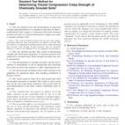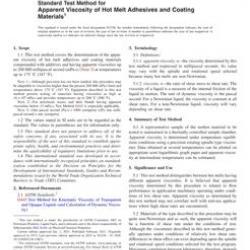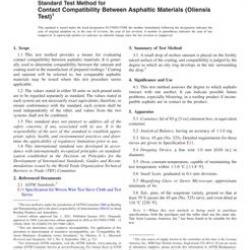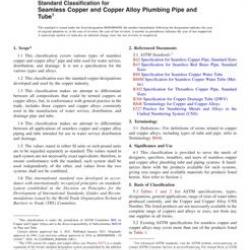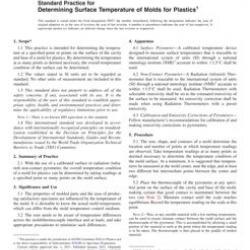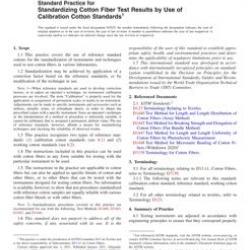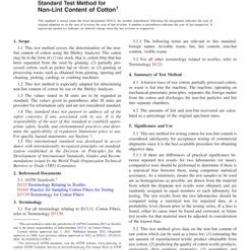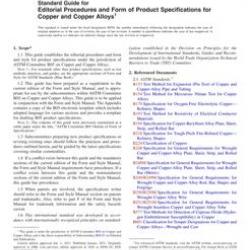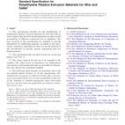No products
ASTM D5202/D5202M-16
ASTM D5202/D5202M-16 Standard Test Method for Determining Triaxial Compression Creep Strength of Chemically Grouted Soils
standard by ASTM International, 11/15/2016
Full Description
1.1This test method covers the determination of long-term strength and deformation of a cylindrical specimen of either a (undisturbed) field sample or laboratory-fabricated chemical grouted soil when it is sheared undrained in compression under a constant sustained load.
Note 1:The voids of chemical grouted soils are most often substantially filled with grout. Thus, pore pressures are unlikely to develop. This test method is not applicable to partially grouted soils in which substantial pore pressures may develop. If pore pressures must be measured, reference is made to Test Method D4767 for equipment and procedures.
1.2This test method provides data useful in determining strength and deformation properties of chemical grouted soils subjected to sustained loads. Mohr strength envelopes may also be determined.
1.3The determination of strength envelopes and the development of relationships to aid in interpreting and evaluating test results are left to the engineer or office requesting the test.
1.4All observed and calculated values shall conform to the guidelines for significant digits and rounding established in Practice D6026.
1.5The values stated in either SI or inch-pound units shall be regarded separately as standard. The values in each system may not be exact equivalents, therefore, each system must be used independently of the other, without combining values in any way.
1.6This standard does not purport to address all of the safety concerns, if any, associated with its use. It is the responsibility of the user of this standard to establish appropriate safety and health practices and determine the applicability of regulatory limitations prior to use.
1.7This test method offers a set of instructions for performing one or more specific operations. This document cannot replace education or experience and should be used in conjunction with professional judgment. Not all aspects of this practice may be applicable in all circumstances. This ASTM standard is not intended to represent or replace the standard of care by which the adequacy of a given professional service must be judged, nor should this document be applied without consideration of a project's many unique aspects. The word Standard in the title of this document means only that the document has been approved through the ASTM consensus process.


